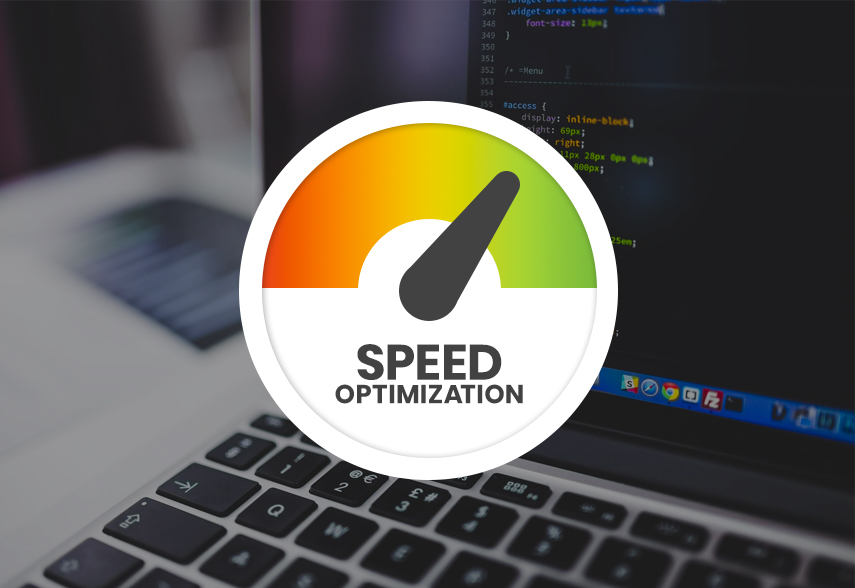
10 Tips to Optimize Your Website Speed for Better Conversions

In the world of digital marketing, website speed plays a crucial role in determining user experience and conversion rates. A fast-loading website enhances user satisfaction, encourages longer visits, and significantly improves the likelihood of conversions. If your website takes too long to load, visitors may bounce to your competitors, resulting in missed opportunities and reduced revenue.
Optimizing website speed isn’t just about technical performance—it directly impacts user engagement, SEO rankings, and ultimately, sales. In this blog, we’ll dive into 10 essential tips to help you optimize your website speed for better conversions.
1. Measure Your Current Website Speed
Before you can improve your website’s speed, it’s essential to know where you currently stand. Tools like Google PageSpeed Insights, GTmetrix, and Pingdom can provide a detailed analysis of your site’s performance. These tools not only show your website’s loading time but also provide actionable insights and areas for improvement.
Key Metrics to Watch:
- Load Time: Ideally, your website should load within 2 seconds. Anything beyond 3 seconds could significantly affect user retention.
- Time to First Byte (TTFB): This measures how long it takes for the browser to receive the first byte of data from the server.
- Fully Loaded Time: This measures how long it takes for your website to fully load all resources, including images, scripts, and stylesheets.
After benchmarking your current speed, prioritize addressing the issues that have the greatest impact.
2. Optimize Images for Faster Loading
Images often account for the largest portion of a website’s data. If not optimized, they can drastically slow down your site. Use tools like TinyPNG or ImageOptim to compress images without sacrificing quality.
Tips for Optimizing Images:
- Use Correct Image Formats: Use JPEG for photographs and PNG for images with transparent backgrounds. Consider WebP format, which offers better compression without losing quality.
- Implement Lazy Loading: Lazy loading ensures that images only load when they are about to enter the user’s viewport, which reduces initial load time.
- Set Proper Dimensions: Ensure your images are properly scaled to fit the display size. Avoid using large images that will be automatically resized by HTML or CSS.
3. Minimize HTTP Requests
Every element on a webpage—images, scripts, CSS files, fonts, etc.—makes an HTTP request to the server. Reducing the number of requests improves loading speed.
How to Reduce HTTP Requests:
- Combine Files: Merge CSS and JavaScript files to reduce the number of requests.
- Remove Unnecessary Plugins: Each plugin can introduce additional scripts and stylesheets, adding to your loading time.
- Use CSS Sprites: Combine multiple small images, like icons, into a single image file and use CSS to display only the portion you need.
4. Enable Browser Caching
Browser caching stores a version of your site on the visitor’s device so that when they return, the browser doesn’t have to reload everything from scratch. This can drastically reduce load times for returning visitors.
Implementing Browser Caching:
- Set Expiration Dates: Configure your server settings to set expiration dates for certain types of content, such as images and stylesheets. This ensures browsers cache these elements for future visits.
- Use Cache-Control Headers: These headers dictate how and when cached resources should be refreshed, ensuring the site remains updated without overloading the server.

5. Minify CSS, JavaScript, and HTML
Minification is the process of removing unnecessary characters (such as whitespace, comments, and unused code) from your CSS, JavaScript, and HTML files to make them smaller and faster to load.
Tools for Minification:
- Minify: A simple tool to minify JavaScript, CSS, and HTML.
- UglifyJS: A JavaScript minification tool.
- CSSNano: A CSS optimizer that reduces the file size of your stylesheets.
By reducing the file size of these critical resources, you can enhance your site’s load time without impacting functionality.
6. Leverage Content Delivery Networks (CDNs)
A CDN is a network of servers distributed across multiple geographic locations. It stores a cached version of your website content and delivers it from the server closest to the user, reducing latency and load times.
Benefits of Using a CDN:
- Faster Load Times: With servers located globally, users receive data from the server nearest to them, reducing travel time.
- Reduced Bandwidth Usage: CDNs cache content, decreasing the strain on your origin server.
- Enhanced Security: Many CDNs come with built-in security features, such as protection against DDoS attacks.
Popular CDN providers include Cloudflare, Akamai, and Amazon CloudFront.
7. Choose a Reliable Hosting Provider
Your hosting provider plays a critical role in website speed. Shared hosting environments often lead to slower load times, especially during peak traffic periods. If your site is lagging, consider upgrading to a more robust hosting plan or switching providers.
Types of Hosting:
- Shared Hosting: Cheapest but slowest, as multiple websites share the same server resources.
- VPS (Virtual Private Server): Offers more control and resources, with fewer sites on the same server.
- Dedicated Hosting: You have your own server, which results in faster load times but at a higher cost.
- Cloud Hosting: Scalable resources depending on your traffic, making it a good option for handling varying loads.
8. Reduce Server Response Time
Server response time is the amount of time it takes for a web server to respond to a request. Google recommends keeping this under 200 milliseconds. Several factors can slow down your server response, including overloaded databases, unoptimized code, or inadequate hosting.
How to Improve Server Response Time:
- Optimize Your Database: For websites with dynamic content (such as WordPress), regularly clean up your database to remove unnecessary data, spam comments, and drafts.
- Use a Fast Web Server: Servers such as Nginx or LiteSpeed can provide faster response times than traditional Apache servers.
9. Enable Gzip Compression
Gzip compression reduces the size of your HTML, CSS, and JavaScript files as they are sent to the browser. This drastically reduces load times, especially for users on slower connections.
Steps to Enable Gzip:
- Use a Plugin: For WordPress sites, plugins like WP Super Cache and W3 Total Cache have built-in Gzip compression features.
- Modify Your Server Settings: If you have server access, you can enable Gzip compression by modifying your
.htaccessfile on Apache servers or updating yournginx.conffile on Nginx servers.
10. Optimize for Mobile Devices
With mobile traffic now exceeding desktop traffic in many industries, it’s vital to ensure your website performs well on mobile devices. Google’s algorithm also takes mobile performance into account when ranking websites.
Steps to Optimize for Mobile:
- Use Responsive Design: Ensure your website adjusts seamlessly across various screen sizes.
- Enable AMP (Accelerated Mobile Pages): AMP strips down unnecessary elements and scripts, delivering a fast, streamlined mobile experience.
- Minimize Redirects: Avoid unnecessary redirects, as they add additional HTTP requests and increase load time.
Website speed optimization is a key factor in improving user experience and driving higher conversion rates. A slow website can frustrate visitors, lead to higher bounce rates, and negatively impact SEO rankings. By implementing the tips outlined in this article—such as optimizing images, leveraging CDNs, minimizing HTTP requests, and choosing a reliable hosting provider—you can significantly enhance your website’s loading times.
Remember, website speed is not a one-time fix. Continuous monitoring and optimization will ensure that your site remains fast and competitive in the ever-evolving digital landscape. By prioritizing speed, you create a better experience for your users and increase the chances of converting them into loyal customers.